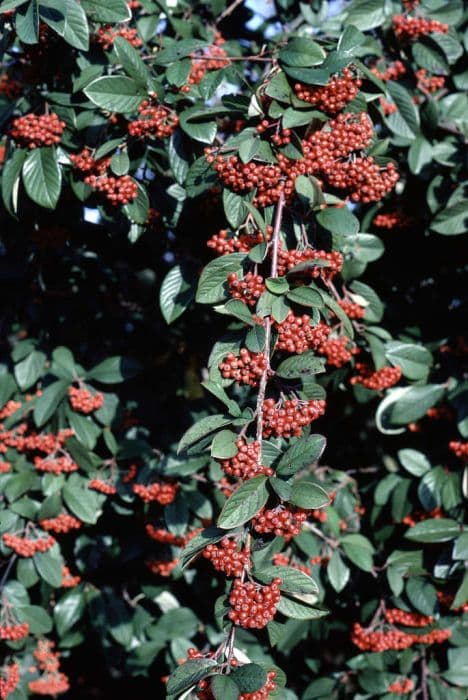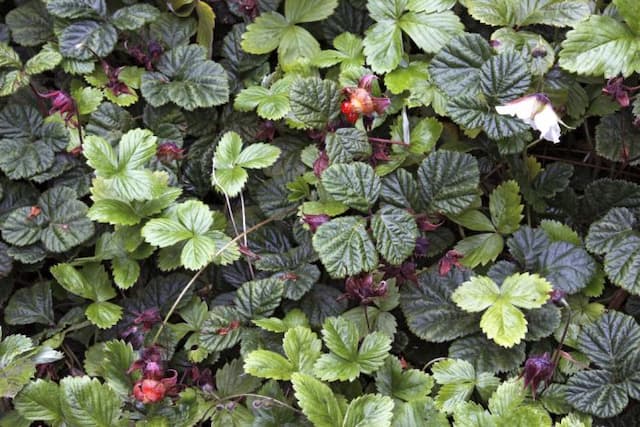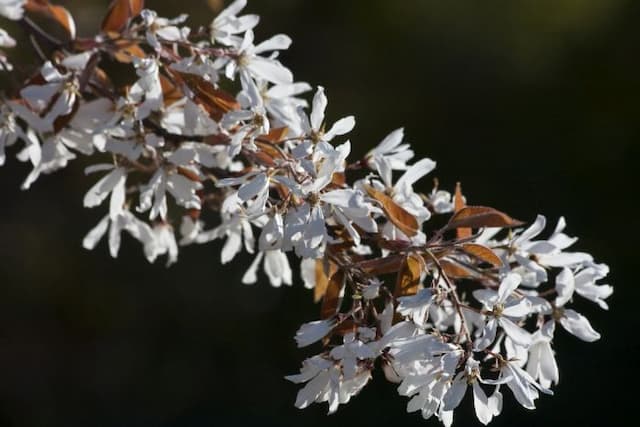Blue Haze Acaena Acaena saccaticupula 'Blue Haze'

ABOUT
The plant known as 'Blue Haze' features a striking appearance with a bluish-green foliage that creates a low, mat-forming ground cover. Its leaves are small, finely textured, and have a unique feathery look. The foliage often displays a silvery overlay, which contributes to its blue-toned appearance that can be quite intense during the cooler months. Throughout the growing season, 'Blue Haze' typically maintains its colorful foliage, adding visual interest to a garden space. This plant also produces small, globular flower heads that can add an ornamental touch. These flower heads are often held above the foliage on slender stems, presenting a burr-like appearance. The flowers usually have a reddish-brown or coppery color, creating a beautiful contrast with the blue-green leaves. Overall, 'Blue Haze' is appreciated for its textured, colorful foliage and its ability to provide a consistent, low-growing carpet in a landscape setting.
About this plant
 Names
NamesFamily
Rosaceae
Synonyms
Blue Haze New Zealand Burr, Blue Haze Acaena
Common names
Acaena saccaticupula 'Blue Haze'.
 Toxicity
ToxicityTo humans
The plant commonly known as Acaena or Biddy-biddy is not widely recognized for having significant toxicity to humans. There is limited information on the ingestion of Acaena saccaticupula 'Blue Haze', as it is not commonly consumed or known to be poisonous. Generally, the plant is cultivated for ornamental purposes, and it would be advisable to avoid ingesting any part of it due to the potential risk of gastrointestinal discomfort as with many non-edible plants. If accidental ingestion occurs and symptoms arise, seek medical attention.
To pets
Biddy-biddy or Acaena is not specifically listed as a toxic plant to pets. However, due to the lack of specific information regarding the toxicity of Acaena saccaticupula 'Blue Haze' to pets, caution is advised. Ingesting non-food plants can result in gastrointestinal upset in pets, such as vomiting or diarrhea. If a pet ingests this plant and shows any adverse reactions, it is recommended to contact a veterinarian.
 Characteristics
CharacteristicsLife cycle
Perennials
Foliage type
Evergreen
Color of leaves
Blue-green
Height
0.1 feet (3 cm)
Spread
1 foot (30 cm)
Plant type
Herb
Hardiness zones
6
Native area
South America
Benefits
 General Benefits
General Benefits- Ground Cover: Offers excellent ground coverage, suppressing weeds and minimising soil erosion.
- Drought Tolerance: Once established, it is highly tolerant of drought, reducing the need for frequent watering.
- Low Maintenance: Requires minimal care beyond initial establishment, making it a convenient choice for gardeners of all levels.
- Attracts Wildlife: Can attract beneficial insects, providing a habitat and food source for garden biodiversity.
- Ornamental Appeal: Features attractive foliage and burr-like seed heads, adding texture and color contrast to garden designs.
- Tolerates Foot Traffic: Capable of withstanding light foot traffic, making it suitable for use between stepping stones or in a lawn alternative.
- Soil Stability: Root systems help stabilise soil on slopes and banks, reducing runoff and soil loss.
- Easy to Propagate: Can be easily propagated by division, making it cost-effective to spread throughout the garden.
- Versatile Planting: Functions well in rock gardens, containers, borders, or as edging plants for paths and walkways.
- Seasonal Interest: Provides year-round interest with evergreen or semi-evergreen foliage in appropriate climates.
 Medical Properties
Medical PropertiesThis plant is not used for medical purposes.
 Air-purifying Qualities
Air-purifying QualitiesThis plant is not specifically known for air purifying qualities.
 Other Uses
Other Uses- Acaena saccaticupula 'Blue Haze', commonly known as Blue Haze, is often used as a ground cover in gardens due to its low-growing habit and textured foliage that creates a visually appealing "carpet" effect.
- Because of its resistance to deer and other herbivores, Blue Haze can be a practical choice in areas where wildlife browsing is a concern for gardeners.
- The plant's dense form can help prevent soil erosion on slopes or banks, providing an ecological benefit as well as aesthetic value.
- The burr-like seed heads of Blue Haze can be used in dried floral arrangements to add interest and texture.
- Some gardeners use Blue Haze in fairy gardens or miniature landscapes for its fine foliage that complements small-scale plantings.
- The contrasting color of Blue Haze's foliage can be used to create visual depth in rock gardens, pairing well with stones and gravel.
- As a tough "stepable" plant, Blue Haze is sometimes planted between pavers or stepping stones to create a living path that visitors can trod lightly upon.
- In container gardens, Blue Haze can be a spiller plant, cascading over the sides of pots and adding a flowing dynamic to the arrangement.
- Blue Haze may be used around water features to provide a soft edge transition between the water and hardscape elements.
- Photographers and artists might find inspiration in the intricate details and blue-green hues of Blue Haze for their creative projects.
Interesting Facts
 Feng Shui
Feng ShuiAcaena saccaticupula 'Blue Haze', also known as Biddy-biddy, is not used in Feng Shui practice.
 Zodiac Sign Compitability
Zodiac Sign CompitabilityBiddy-biddy is not used in astrology practice.
 Plant Symbolism
Plant Symbolism- Adaptability - Acaena saccaticupula 'Blue Haze', commonly known as Blue Haze Acaena, often thrives in a variety of conditions, symbolizing the ability to adapt and flourish in different environments.
- Resilience - This plant's hardiness and ability to grow in poor soils represent resilience and the capacity to overcome challenging circumstances.
- Modesty - Blue Haze Acaena has a low-growing, unassuming habit, which can symbolize humility and modesty in one’s character.
 Water
WaterThe New Zealand Bur; water deeply but infrequently to simulate natural conditions, aiming for a deep soak rather than frequent light watering. During the growing season of spring through fall, water once every week or two, ensuring the plant receives roughly one gallon per watering session for an established plant, adjusting for particularly hot or dry conditions which may necessitate a slightly increased frequency. In winter, reduce watering to every two to three weeks, depending on the climate and whether the plant is receiving additional moisture from rain or snowfall. Always allow the soil to dry out partially between waterings to prevent root rot, a common issue with overwatered Acaena.
 Light
LightThe New Zealand Bur; thrives best in full sun to partial shade. It prefers a location where it can receive at least 4-6 hours of direct sunlight daily. An ideal spot would provide morning sunlight and dappled shade in the afternoon, especially in regions with very hot summers, to protect it from the most intense afternoon rays.
 Temperature
TemperatureThe New Zealand Bur; prefers temperatures in a range of 60 to 75 degrees Fahrenheit but can tolerate temperatures as low as 50 degrees Fahrenheit and as high as 85 degrees Fahrenheit. Its ideal growing conditions are within the moderate climate band, where temperature extremes are rare.
 Pruning
PruningThe New Zealand Bur; should be pruned to remove dead or damaged foliage, which encourages healthy growth and prevents disease. Prune in late winter or early spring before new growth starts. The plant typically requires little pruning, but cutting back can be done every couple of years to maintain its shape and rejuvenate older plants.
 Cleaning
CleaningAs needed
 Soil
SoilFor Blue Haze, a well-draining soil mix with sand and peat, having a pH range of 6.1 to 7.8, is ideal to ensure healthy growth and drainage.
 Repotting
RepottingBlue Haze should be repotted every 2 to 3 years to refresh the soil and accommodate root growth.
 Humidity & Misting
Humidity & MistingBlue Haze prefers moderate humidity levels but is quite adaptable and can tolerate a range of humidity conditions.
 Suitable locations
Suitable locationsIndoor
Place Blue Haze in bright, indirect light with good air circulation.
Outdoor
Plant in partial shade, well-draining soil, shelter from strong winds.
Hardiness zone
5-9 USDA
 Life cycle
Life cycleAcaena saccaticupula 'Blue Haze', commonly known as Blue Haze New Zealand Bur, begins its life cycle with germination, which tends to occur effectively in moist, well-drained soil and under adequate warmth. The seedlings emerge and establish a rosette of bluish-green, feathery foliage, growing into a dense, ground-covering mat. Throughout the growing season, particularly in summer, it produces flowering stems that rise above the foliage, with small, inconspicuous flowers that can attract pollinators. After pollination, the flowers transform into bur-like seed heads covered in hooks or spines. These burs can be dispersed by animals or humans as they cling to fur or clothing, facilitating the plant's spread. As a perennial, Blue Haze New Zealand Bur will die back in winter, especially in colder climates, before re-sprouting from the root system in the following spring to continue its cycle.
 Propogation
PropogationPropogation time
Spring to early summer
Acaena saccaticupula 'Blue Haze', commonly known as New Zealand Bur, is a plant that is often propagated through seed or division. The most popular method of propagation for New Zealand Bur is by division, which is best performed in early spring. To propagate by division, carefully lift the parent plant from the ground and use a sharp knife or spade to divide the root ball into several sections, ensuring each section has a good portion of roots and at least a few shoots. These divisions can then be replanted immediately into well-prepared soil, spaced about 12 inches (approximately 30 centimeters) apart to give the plants plenty of room to spread. Water the new plants thoroughly after planting and maintain even moisture until they are well established.









